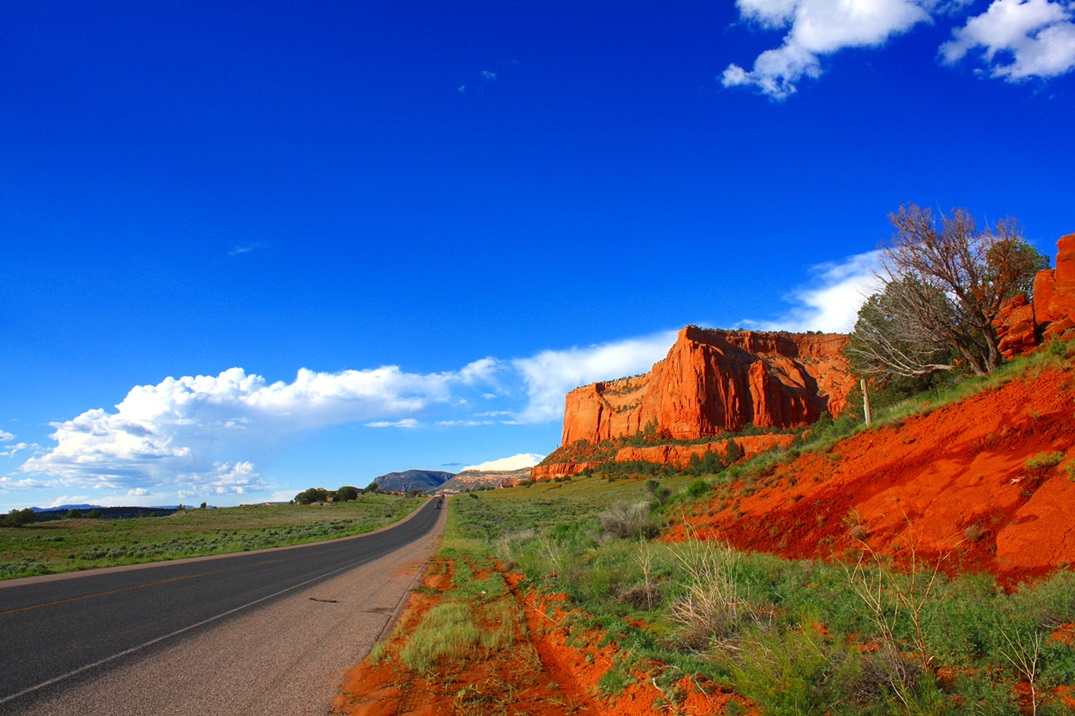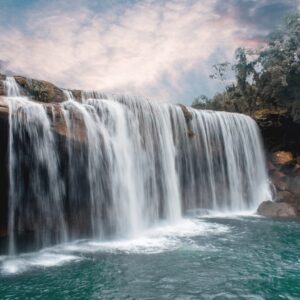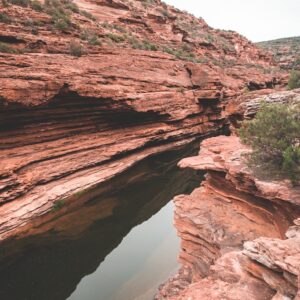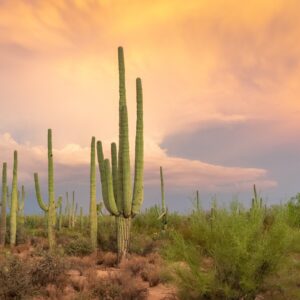Nestled in the heart of the awe-inspiring Sonoran Desert, the Arizona Sonoran Desert Museum stands as a tribute to the remarkable biodiversity and unique beauty of one of North America’s most iconic desert ecosystems. Located just west of Tucson, Arizona, this living museum is a place of wonder, education, and conservation, offering visitors a chance to explore the captivating world of desert wildlife and plants in their natural habitats. Join us as we embark on a journey to discover the Arizona Sonoran Desert Museum, where science, nature, and education converge to celebrate the splendor of the desert.
An Oasis in the Desert
The Arizona Sonoran Desert Museum is a unique institution that defies traditional museum expectations. Rather than being housed in a single building, the museum spans 98 acres of desert terrain, artfully blending exhibits with the natural landscape. The result is an immersive experience that allows visitors to encounter the desert’s flora and fauna in their native environments.
The Sonoran Desert, one of the most biodiverse deserts in the world, is known for its striking beauty, with towering saguaro cacti, majestic desert landscapes, and a fascinating array of wildlife. The museum’s location in this desert paradise provides an ideal setting for its mission of inspiring the conservation of the Sonoran Desert.
A Living Museum of Biodiversity
One of the most remarkable aspects of the Arizona Sonoran Desert Museum is its focus on living exhibits. Instead of traditional, static displays, the museum emphasizes a dynamic and immersive approach to showcasing the desert’s incredible diversity. Here are some of the key highlights that visitors can expect to encounter:
Desert Wildlife
The museum is home to a wide variety of native wildlife, including mammals, reptiles, and birds. The Desert Loop Trail offers a journey through several different desert habitats, allowing visitors to observe animals like javelinas, coyotes, desert tortoises, and rattlesnakes in settings that closely resemble their natural homes.
The museum is also renowned for its raptor free-flight demonstrations. These awe-inspiring shows feature hawks, falcons, and owls soaring through the desert sky, allowing visitors to witness these magnificent birds of prey in flight.
Cactus Garden
The iconic saguaro cactus, with its towering arms, is the quintessential symbol of the American Southwest. The museum’s Cactus Garden is a living testament to the beauty and diversity of desert plant life. Along the paths of the garden, you’ll encounter countless species of cacti, including barrel cacti, prickly pears, and chollas, each uniquely adapted to thrive in the harsh desert environment.
Desert Aviary
Bird enthusiasts will be captivated by the Desert Aviary, which houses a variety of birds native to the Sonoran Desert. Here, you can observe species such as roadrunners, quail, and various songbirds in a lush and verdant environment. The museum’s focus on maintaining natural habitats allows these birds to thrive, offering visitors a unique opportunity to experience desert birdlife up close.
Earth Sciences Center
For those interested in the geology and paleontology of the region, the Earth Sciences Center provides insight into the formation of the Sonoran Desert and the ancient life forms that once inhabited the area. Exhibits showcase fossils and geological features that reveal the desert’s deep history.
Gardens
The museum’s botanical gardens are a testament to the resilience and adaptability of desert plants. Here, you can explore a wide variety of species, from colorful wildflowers to drought-tolerant shrubs and trees. The gardens serve as a source of inspiration for those looking to create their own desert-friendly landscapes.
Raptor Free-Flight Demonstrations
One of the most thrilling experiences at the museum is the daily Raptor Free-Flight Demonstration. These awe-inspiring shows allow visitors to witness the power and grace of birds of prey in flight. Trained raptors, including hawks, owls, and falcons, glide over the audience, providing a close-up look at their incredible flying abilities.
The demonstrations offer a unique educational experience, allowing visitors to learn about the adaptations, behaviors, and ecological roles of these magnificent birds. For many, seeing these raptors in action is a highlight of their visit.
Desert Discovery Day
The Arizona Sonoran Desert Museum is not just a place for visitors to observe nature passively; it’s also a hub of education and research. The museum hosts special events throughout the year, and one of the most popular is Desert Discovery Day.
Desert Discovery Day is a family-friendly event that features a range of hands-on activities, workshops, and educational presentations. It’s an opportunity for visitors to deepen their understanding of the desert ecosystem, explore its intricacies, and engage with experts in the field. For children, it’s a chance to ignite a passion for nature and science.
The Conservation Mission
The Arizona Sonoran Desert Museum is not just a place of entertainment and education; it is also a champion for the preservation and conservation of the Sonoran Desert. The museum actively participates in research projects, habitat restoration efforts, and initiatives to protect endangered species.
The museum’s conservation work extends beyond its own boundaries. It collaborates with various organizations, including the Arizona Game and Fish Department, to contribute to the broader mission of protecting the fragile ecosystems of the region.
A Hub for Education
The museum places a strong emphasis on education, providing visitors with the tools and knowledge to understand and appreciate the Sonoran Desert. Its educational programs include a variety of offerings for schools, families, and individuals. Here are some of the educational highlights:
School Programs
The museum offers an array of programs tailored to school groups, providing students with immersive experiences and opportunities to explore the desert’s ecosystems. These programs are designed to align with state education standards and foster a deep appreciation for nature.
Docent-Led Tours
For an in-depth exploration of the museum’s exhibits and the Sonoran Desert, visitors can join a docent-led tour. These tours are an excellent way to gain insights and perspectives from knowledgeable guides who are passionate about the desert’s flora and fauna.
Desert Museum Press
The museum publishes its own series of educational books, field guides, and other resources, providing visitors with the tools to further their understanding of the desert. These materials are an invaluable resource for educators, students, and anyone interested in the natural world.
The Art of Conservation
Art is not just a form of expression; it can also serve as a powerful tool for conservation. The museum recognizes the significance of art in fostering an emotional connection to the natural world. To this end, it celebrates the intersection of art and conservation through its art programs and exhibitions.
The Ironwood Gallery, located within the museum, hosts a rotating series of art exhibits that focus on nature, conservation, and the Sonoran Desert. These exhibits often feature works by artists whose creations are inspired by the natural world. By showcasing the art of the desert, the museum aims to deepen the connection between visitors and the environment.
The Botany Program
Plants are the foundation of the desert ecosystem, and the museum’s Botany Program plays a vital role in conserving and understanding the region’s plant life. Researchers and botanists at the museum are engaged in ongoing efforts to study and protect the diverse plant species found in the Sonoran Desert.
The program encompasses initiatives such as seed banking, habitat restoration, and studies of desert plants and their adaptations. By preserving seeds and knowledge of these plants, the museum is contributing to the long-term survival of desert ecosystems.
The Arizona Sonoran Desert Museum is a place of inspiration, education, and conservation. It allows visitors to immerse themselves in the breathtaking beauty of the Sonoran Desert while gaining a deep appreciation for the unique ecosystems that thrive in this arid landscape.
Through its living exhibits, educational programs, and conservation initiatives, the museum underscores the importance of understanding and protecting our natural world. The desert, with its diverse wildlife and plant life, serves as a living testament to the resilience and adaptability of life on Earth. By visiting the Arizona Sonoran Desert Museum, you not only embark on a captivating journey of discovery but also contribute to the ongoing efforts to preserve and protect the delicate ecosystems of the Sonoran Desert.





